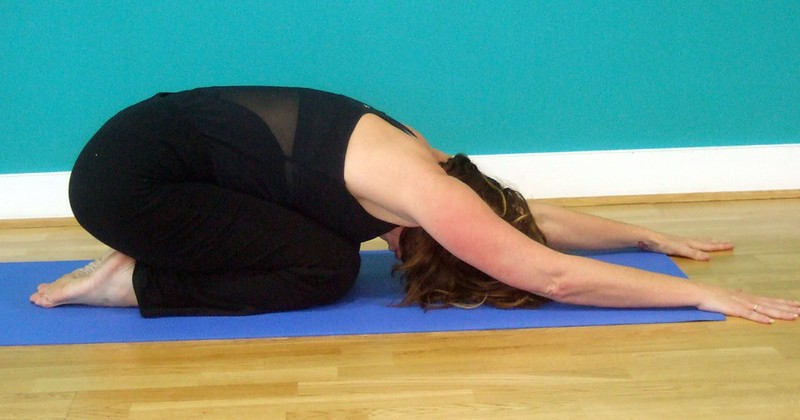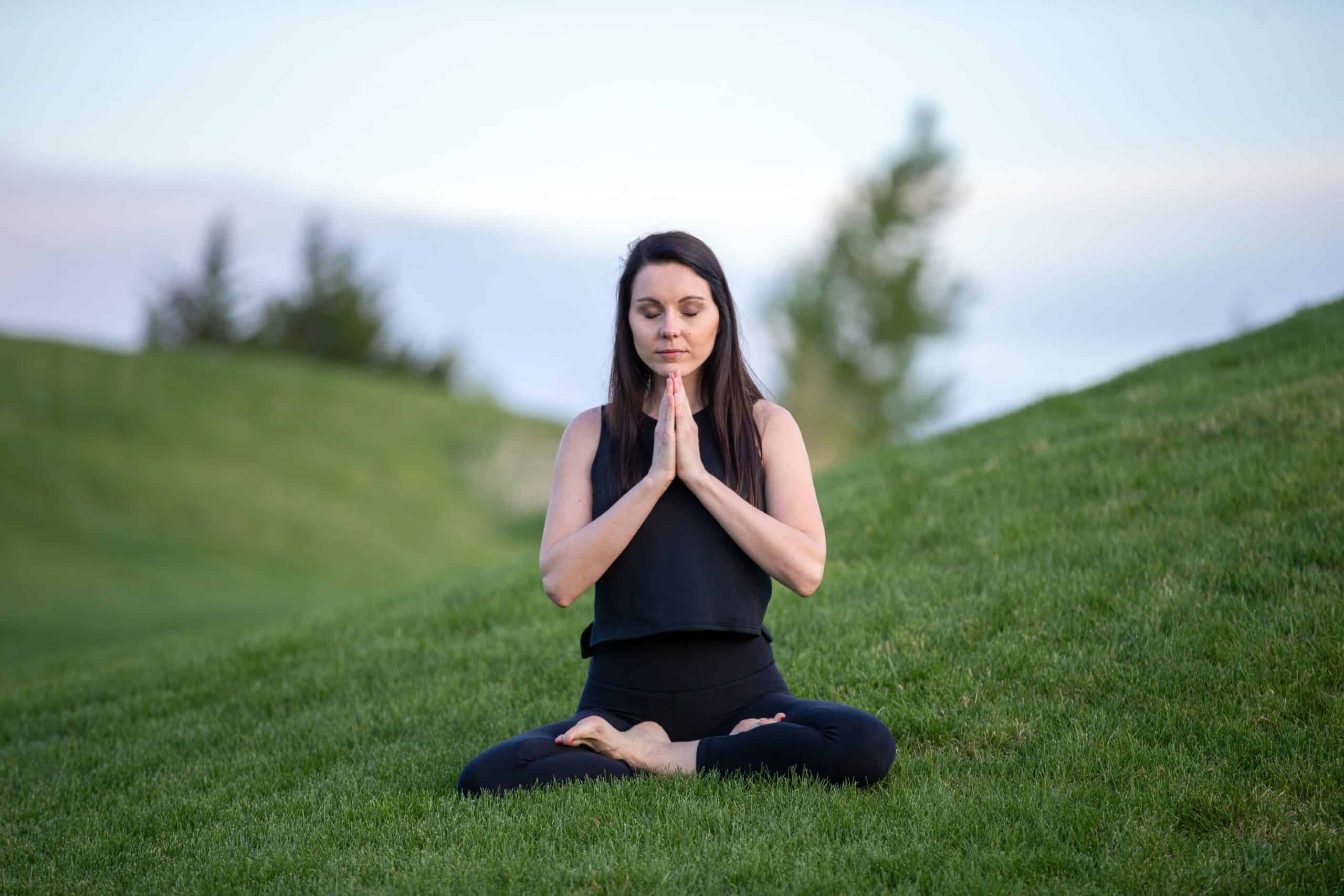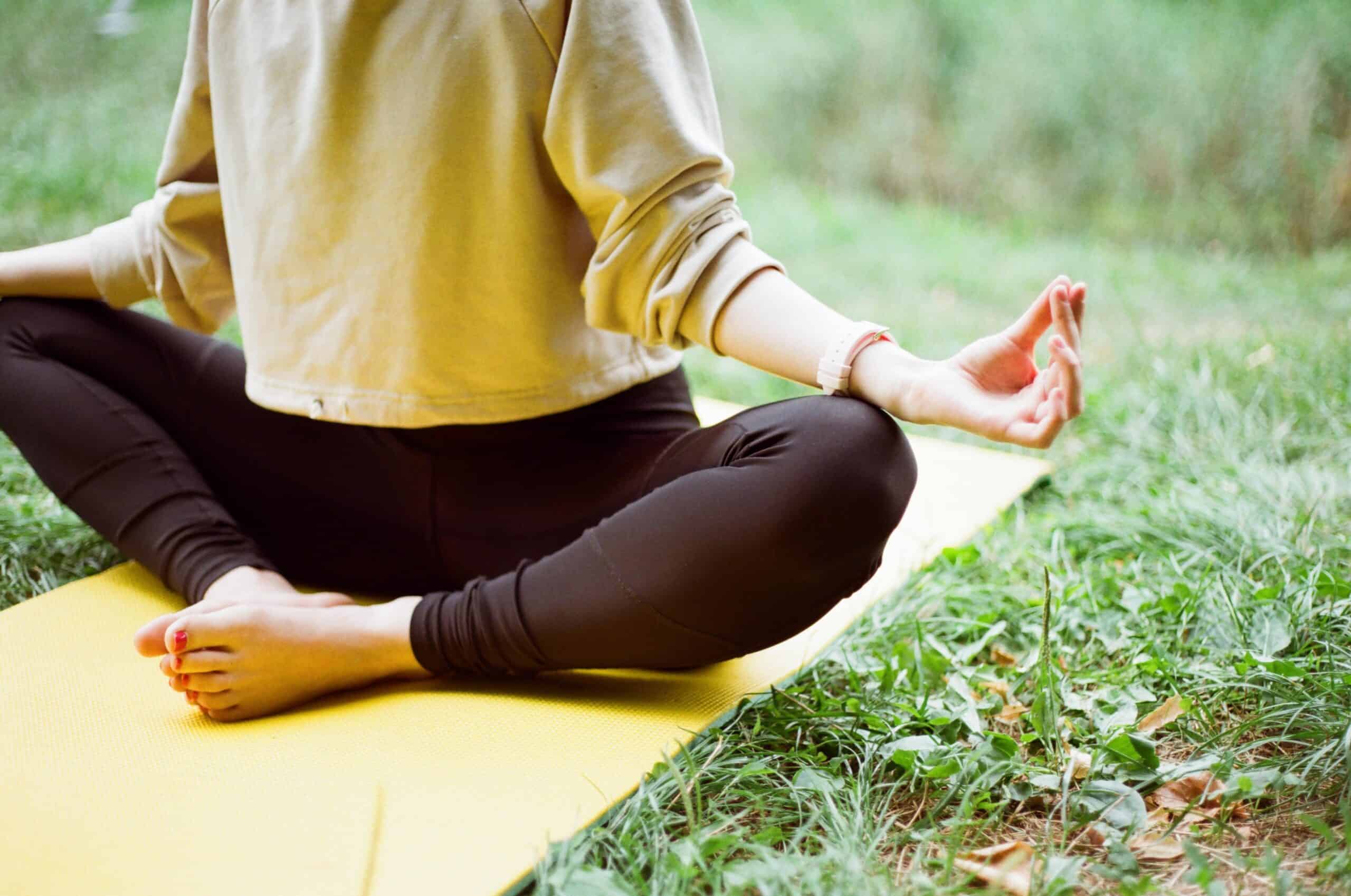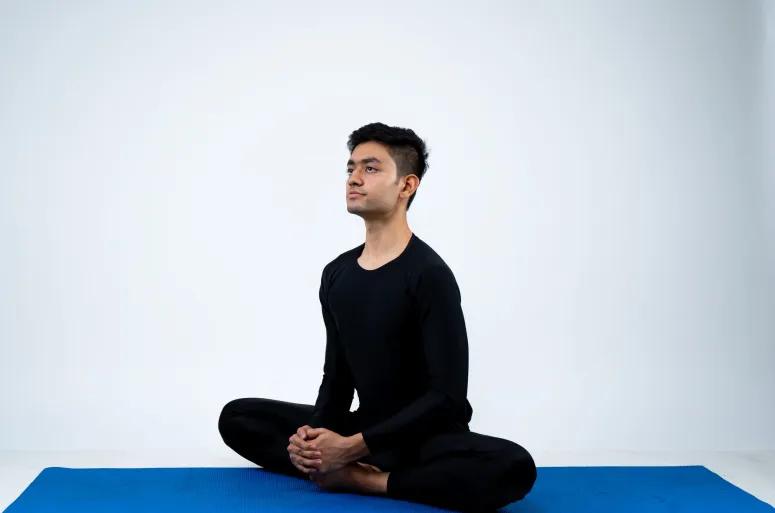Discovering the Deep Benefits of Balasana Finding moments of peace and tranquility in modern life can be tough.
Despite the chaos, one basic yoga pose provides a refuge of calm: Balasana, often known as Child’s Pose. This basic asana, widely employed as a resting pose, has several benefits to the body and mind. Let us go into the depths of Balasana and find its profound effects on our health.
Understanding Balasana:
Before we go into the advantages, let’s first understand how Balasana works. To begin this position, kneel on the yoga mat with your big toes touching and your knees wide apart.
Slowly lower your torso between your thighs, stretching your arms forward or beside your body with palms down. Rest your forehead on the mat and let your entire body relax. Sink deeper into the posture with each breath, feeling the relaxation and surrender.
Physical Benefits of Balasana:
- Improves Spinal Alignment and Flexibility: Balasana stretches the spine, reducing stress and promoting alignment. Regular practice of this position helps increase spinal flexibility, decreasing stiffness and pain caused by extended sitting or standing.
- Natural Back Pain Relief: Child’s Pose lengthens the spine and relieves stress in the lower back. The gentle compression of the belly on the thighs massages the internal organs, improving blood circulation and alleviating pain.
- Hip Opening and Mobility: Balasana’s broad knees allow for hip opening and flexor stretching. This is especially useful for people who spend a lot of time sitting since it helps offset the effects of sedentary lifestyles on hip mobility.
- Relaxation of Neck and Shoulders: In Child’s Pose, resting the forehead on the mat helps relieve tension in the neck and shoulders. This is especially beneficial for people who suffer from upper-body stiffness or tightness caused by stress or poor posture.
- Improved Digestion: Balasana’s mild abdominal compression stimulates digestive organs, reducing symptoms of bloating and indigestion. Regular practice of this position can help to promote good digestion and relieve gastrointestinal pain.
Mental and Emotional Benefits of Balasana:
- Stress Reduction: Balasana provides a sense of tranquility among everyday stress. The slight pressure on the forehead in this position activates the third eye chakra, providing inner serenity and tranquility. Practitioners who focus on their breath and submit to the present moment might experience great relaxation and stress reduction.
- Anxiety Relief: Child’s Pose’s warm embrace can help manage anxiety by providing a sense of stability and grounding. As the body relaxes and the mind quiets, practitioners may let go of anxieties and fears, finding comfort in the tranquility of the present moment.
- Mind-Body link: Balasana promotes introspection and self-awareness, strengthening the link between the mind and body. Practitioners can acquire a better feeling of mindfulness and presence in their daily lives by focusing on bodily sensations and noticing mental fluctuations.
- Release of Tension and Trauma: Child’s Pose offers a safe environment for emotional release and healing. As practitioners relax into the posture, they may become aware of stored stress or unresolved emotions inside their bodies. They may begin to remove these layers of stress and trauma by breathing consciously and accepting themselves, allowing for inner calm and healing.
- Cultivating Surrender and Acceptance: Balasana encourages us to let go of control and simply be. The humility of Child’s Pose teaches us to believe in the wisdom of our bodies and the cosmos, submitting to the flow of life with grace and tranquility.
Conclusion:
In a world full of perpetual action and commotion, Balasana is a beacon of peace and serenity. This deceptively basic yoga stance has a plethora of physical and mental advantages.
Child’s Pose promotes spinal alignment and flexibility while alleviating tension and anxiety, providing a comprehensive approach to well-being that goes beyond the physical realm. As we succumb to Balasana’s soft embrace, may we find consolation in its stillness and wisdom, creating a greater feeling of calm and presence in our lives.
Frequently Asked Question
What disease does Balasana cure?
Balasana, or Child’s Pose, is not a cure for specific diseases or medical conditions but can offer therapeutic benefits that complement traditional treatments.
It promotes relaxation, reduces stress, relieves back pain, aids in anxiety management, stimulates digestive organs, and provides relief from menstrual discomfort. However, it should be used alongside medical treatment, lifestyle modifications, and supportive therapies. Individuals with specific health concerns should consult a healthcare professional before starting any new exercise or yoga practice.
Is Balasana good for back pain?
Balasana, also known as Child’s Pose, can help alleviate back pain by promoting relaxation and flexibility in the back, spine, and hips.
This pose involves forward bending, which elongates the spine and stretches the muscles along the back. It also promotes muscle relaxation, reducing tension in the back, shoulders, and neck. Balasana also helps open the hips, alleviating strain on the lower back and promoting greater mobility. It also reduces stress levels, promoting relaxation throughout the body. Practicing Balasana also encourages mindfulness, helping individuals understand their postural habits and movement patterns. However, individuals with severe or chronic back conditions need to approach the pose cautiously and consult a healthcare professional before starting any new exercise or yoga practice.
How much time should I do Balasana?
Balasana, or Child’s Pose, can be practiced for various purposes, including resting, stress relief, transitioning, and part of a routine. It can be used as a resting pose, allowing practitioners to recharge and rejuvenate. For stress relief, longer holds can promote calmness and serenity. Balasana can also be incorporated into yoga sequences or routines, adjusting the duration based on the flow of the practice. It can also be practiced as part of a morning or evening routine to start or end the day on a calming note. The duration of Balasana should be guided by personal preference and comfort level, with shorter holds being more comfortable for beginners. Prioritizing safety and listening to the body’s feedback is crucial during yoga practice.
Who should avoid Balasana?
Balasana, also known as Child’s Pose, is a pose that can be beneficial for many practitioners. However, it is important to approach it with caution or avoid it altogether. For knee or ankle injuries, it may exacerbate discomfort. Pregnant women should practice Balasana with caution, ensuring enough space for the belly and avoiding deep forward bends. High blood pressure should avoid Balasana, as the forward bending motion can temporarily increase blood pressure.
Abdominal surgery patients should avoid putting pressure on the abdomen and focus on gentle, supportive poses. Vertigo or dizziness sufferers should prioritize safety and stability. Severe sciatica patients should consult a healthcare professional for appropriate modifications or alternative poses. It is crucial to listen to your body and practice mindfully, adapting poses to suit individual needs.





No Comments